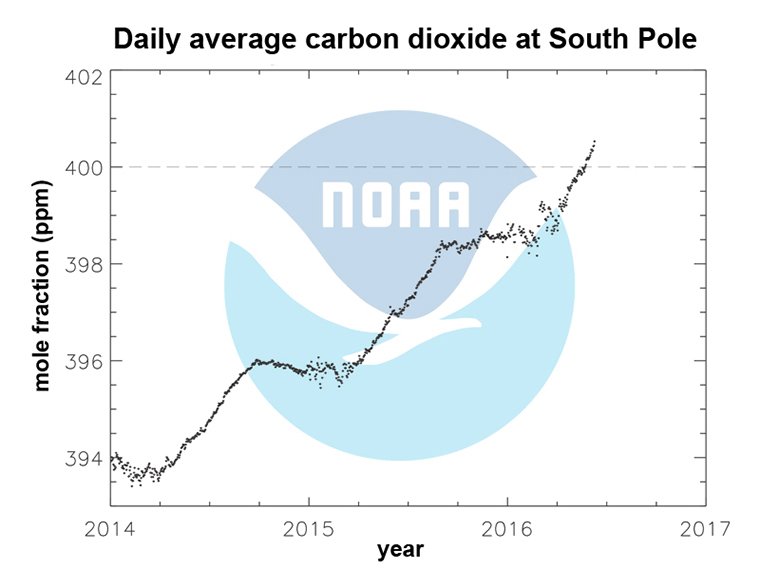South Pole last place on Earth to reach 400ppm CO2

ON 23 MAY, Antarctica became the last place on Earth to exceed carbon dioxide levels of 400 parts per million (ppm), according to the National Oceanic and Atmospheric Administration (NOAA), a US science agency.
While the South Pole has shown the same upward trend in CO2 as the rest of the world, its remote location has meant it was the last to register impacts of increasing emissions and to surpass this symbolic milestone.
“The far southern hemisphere was the last place on earth where CO2 had not yet reached [400ppm],” said Pieter Tans, the lead scientist of NOAA’s Global Greenhouse Gas Reference Network.
“Global CO2 levels will not return to values below 400ppm in our lifetimes, and almost certainly for much longer,” he said.

Daily average carbon dioxide readings at the South Pole from 2014 to present, as recorded by NOAA’s greenhouse gas monitoring network. (NOAA)
The last time Earth had this much carbon dioxide in the atmosphere was more than a million years ago, long before the evolution of modern humans.
Many experts including renowned American climatologist James Hanson have previously suggested the ‘safe’ level of CO2 that we should be targetting is 350ppm.
Over the course of the year, CO2 levels rise during the Northern Hemisphere’s cooler months and decline during the northern summer. But every year since observations began in 1958 there has been more CO2 in the atmosphere than the year before. This year is likely to break a record as the fifth consecutive year in which average CO2 levels grow by more than 2ppm.
Last year’s global CO2 average reached 399ppm, meaning that the global average in 2016 will almost certainly surpass 400ppm, according to the NOAA.
READ MORE:
- VIDEO: Moving Arctic solo raises climate awareness
- Summer sea temps hottest on record
- 2016 likely to be world’s hottest year on record
- GALLERY: Changing landscapes of climate change




